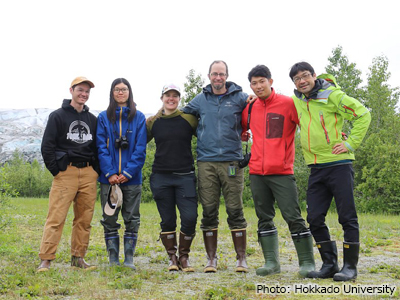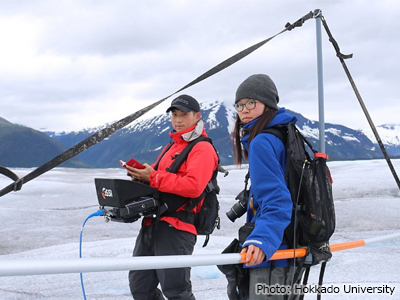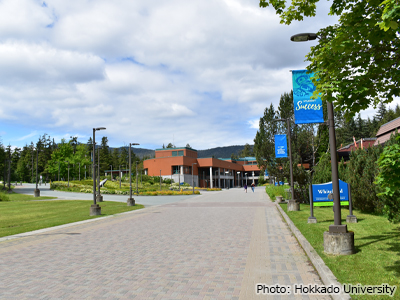Ice thickness survey using ice radar on Taku Glacier, Southeast Alaska
Overseas Fellowship Program Participant:FY2023 First Call Short-Term Program
Ken Sato (Hokkaido University)
From June 24 to July 20, 2023, I visited the University of Alaska Southeast and participated in field observations at Taku Glacier in the Juneau Icefield conducted by Associate Professor Jason Amundson (Fig. 1). After the observations, I stayed in the university for data analysis, discussions on the observation results and research presentations. The main objective of my research visit to Alaska was to promote my master’s research on ice radar measurement.


The Juneau Icefield, where Taku Glacier is located, is rapidly melting and retreating. However, unlike other glaciers, Taku Glacier advanced until 2015. In addition to the anomalous glacier change, the glacier bed consists of a thick sediment layer that affects the ice flow and glacier change. Understanding the unique glacier dynamics of Taku Glacier will enhance our understanding of the dynamics of tidewater glaciers.
In the field observations, the University of Alaska and Hokkaido University collaborated to conduct several observations. I was in charge of ice thickness observations using ice radar (Fig. 2). Ice radar obtains ice thickness data and the englacial/subglacial environment by using the reflection of electromagnetic waves. Our observation expands the coverage of existing data and to be compared with previous measurements for changes in the glacier and bed. During the field observation, I succeeded in obtaining a lot of ice radar data near the front of the glacier. This observation data will contribute to our understanding of future changes in Taku Glacier.


Next, let me introduce the University of Alaska and Juneau. Juneau is situated in a rich natural area surrounded by mountains and a bay. During my stay in the town, I saw many tourists enjoying the beautiful nature. The University of Alaska Southeast is located in such a beautiful natural environment (Fig. 3). During my stay in the university, we could use a conference room for data analysis. I also had an opportunity to discuss with members of the University of Alaska observation team. We introduced our research topics to each other as well as observation data from Taku Glacier (Fig. 4). After the return to Japan, I will further analyze the ice radar data and combine the results with the flow velocity and high-resolution DEM data obtained during the field campaign to understand the dynamics of Taku Glacier.
